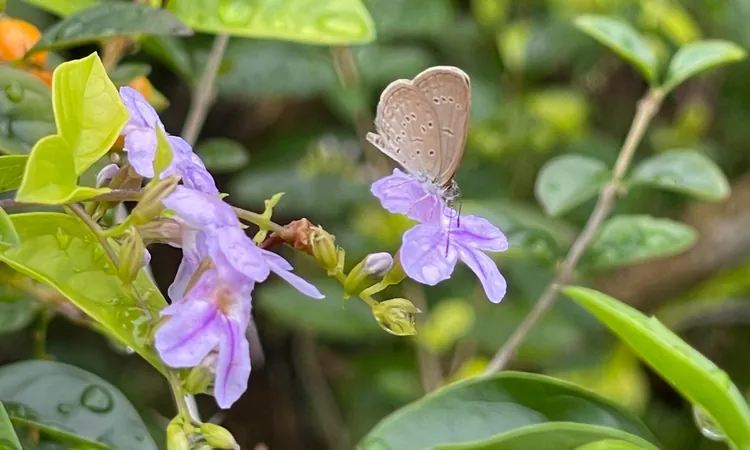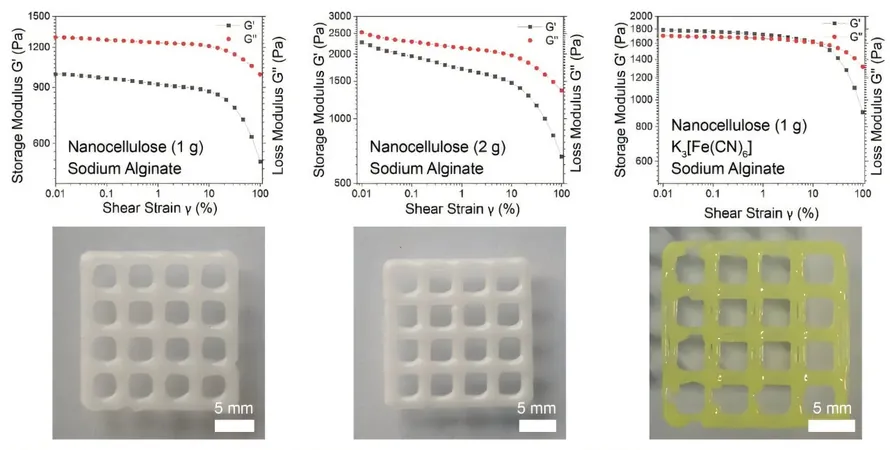
Butterflies Thrive Along City Roadsides: A Game-Changer for Urban Planning!
2025-04-16
Author: Michael
Discover How Roadside Greenery Boosts Butterfly Populations!
In a groundbreaking Singapore study, researchers have uncovered a surprising benefit of roadside greenery: it's a sanctuary for butterflies! These charming pollinators play a crucial role in our urban ecosystems and thrive in small artificial green spaces located next to busy roads.
Transforming Urban Landscapes: A Green Revolution!
Conducted by the esteemed Nanyang Technological University, Singapore (NTU Singapore), this research highlights how road verges—strips of vegetation lining the roads—can significantly increase both the number and variety of butterfly species. The study reveals that verges adorned with diverse flowering plants, which are pruned less frequently, become hotspots of butterfly activity.
The Hidden Corridors of Nature!
Interestingly, these road verges also function as vital corridors, connecting butterflies to larger green spaces nearby. However, the study notes that busy roads can pose risks to these delicate insects—the increased traffic can negatively impact butterfly populations unless speed limits are moderated.
A First in Tropical Research!
This pivotal research fills a significant gap, as previous studies predominantly focused on temperate zones. By examining cultivated vegetation along Singapore's major roads, the findings contribute to a broader understanding of biodiversity in urban environments, particularly in tropical climates.
From Garden City to City in Nature
These insights align with Singapore's decades-long vision of transforming from a "Garden City" to a "City in Nature." City planners are keen to create what could be termed 'nature ways'—roads designed to mirror natural forests, enhancing wildlife mobility and biodiversity.
Butterflies: Nature's Indicators!
Butterflies are excellent indicators of ecological health, and their loss can signal serious environmental issues. By enhancing roadside verges with a variety of flowering plants, the research found a direct correlation between plant diversity and butterfly richness, proving that these modifications could lead to flourishing butterfly populations.
Creating a Butterfly Haven!
The study emphasized that larger, well-varied verges that include flowering and non-flowering plants are more attractive to butterflies. Different plant species bloom at various times, ensuring a constant nectar supply throughout the year, which is key to maintaining robust butterfly populations.
Nature's Protection for Butterflies!
Another exciting finding suggests that mixed plant heights create microclimates favorable to butterflies—offering protection from harsh winds and predators. When plants grow variably, they form natural shelters that can help butterflies thrive even amidst busy roadways.
How Traffic Affects Fluttering Friends!
Unfortunately, high traffic density and speed limits can severely disrupt butterfly habitats. The study illustrates how increased pollution and the threat of collisions from fast-moving vehicles further endanger butterfly populations.
Small Changes, Big Impact!
However, there’s hope! By strategically enhancing the variety and height of plants along road verges, cities can mitigate the adverse effects of traffic. These small but significant alterations could lead to a more hospitable environment for butterflies, without the need for extensive road modifications.
A Call to Action for Urban Planners!
This research provides invaluable insights for city planners and policymakers, serving as a guide to design more sustainable urban spaces that harmonize nature and modern living. It’s a reminder that even in bustling urban centers, there lies an opportunity to nurture biodiversity and promote ecological health!









 Brasil (PT)
Brasil (PT)
 Canada (EN)
Canada (EN)
 Chile (ES)
Chile (ES)
 Česko (CS)
Česko (CS)
 대한민국 (KO)
대한민국 (KO)
 España (ES)
España (ES)
 France (FR)
France (FR)
 Hong Kong (EN)
Hong Kong (EN)
 Italia (IT)
Italia (IT)
 日本 (JA)
日本 (JA)
 Magyarország (HU)
Magyarország (HU)
 Norge (NO)
Norge (NO)
 Polska (PL)
Polska (PL)
 Schweiz (DE)
Schweiz (DE)
 Singapore (EN)
Singapore (EN)
 Sverige (SV)
Sverige (SV)
 Suomi (FI)
Suomi (FI)
 Türkiye (TR)
Türkiye (TR)
 الإمارات العربية المتحدة (AR)
الإمارات العربية المتحدة (AR)